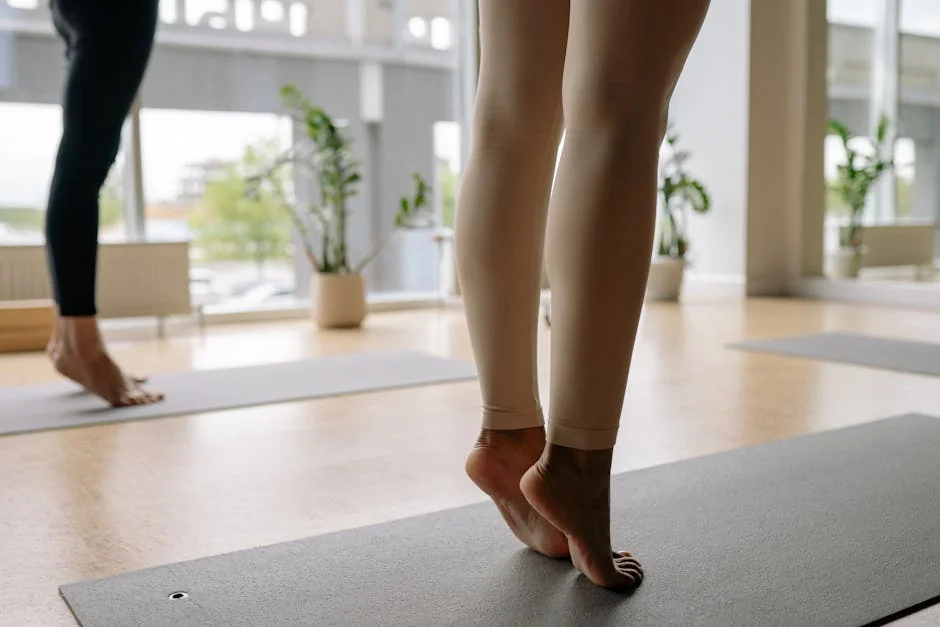In our world of endless notifications and multitasking, your ability to focus is under constant attack. You sit down to work, only to find your mind jumping from a forgotten errand to a stressful email, leaving you feeling scattered and unproductive. What’s the secret to reclaiming a calm and focused mind? The answer lies in mastering the powerful, intertwined skills of concentration and mindfulness. While often used interchangeably, they are not the same thing, and understanding their unique roles is the first step toward profound mental clarity.
This guide is your deep dive into this dynamic duo. We'll clear up the confusion, showing you how concentration acts as a laser beam of focus, while mindfulness is your spacious, non-judgmental awareness. You’ll discover not just the "why" but the "how," with foundational practices to sharpen your attention and cultivate present-moment awareness. Get ready to learn how to weave these essential skills into your daily life, transforming your work, reducing stress, and unlocking a new level of mental control.
What is the Difference Between Concentration and Mindfulness?
Imagine your mind is a vast, dark stage. Concentration is the bright spotlight you direct onto a single performer—your breath, a mantra, or a specific sensation. Its job is to stay steady and unwavering on that one point, ignoring the shadows and movement in the background. When your mind wanders, concentration is the mental muscle that brings the spotlight back.
Mindfulness, on the other hand, is your awareness of the entire stage. It’s the curious, non-judgmental director who notices the spotlight itself, the main performer, the other actors in the wings, the dust in the air, and even the audience's reactions (your thoughts and feelings). Mindfulness doesn't try to change anything; it simply observes everything with acceptance.
They are two wings of the same bird. You cannot be truly mindful without some degree of concentration to stabilize your awareness. Conversely, deep concentration benefits from the gentle, accepting attitude of mindfulness, which prevents you from becoming frustrated or forceful when your focus wavers.
- Concentration (Samadhi): The ability to focus single-pointedly on one object. It’s exclusive and narrows your awareness.
- Mindfulness (Sati): The ability to remain aware of your present-moment experience without judgment. It’s inclusive and expands your awareness.
In your meditation practice, you might use concentration to focus on your breath. When a thought about your to-do list arises, mindfulness is the quality that notices, "Ah, planning is happening," without getting caught in the story. Then, concentration is the skill you use to gently return your focus to the breath.
Why Your Brain Needs Both Concentration and Mindfulness
Mastering these two skills is like giving your brain a complete upgrade. They work in tandem to rewire your neural pathways, a process known as neuroplasticity, leading to tangible benefits in every area of your life.
The Power of Sharpened Concentration
A well-trained concentration muscle directly translates to a more efficient and productive mind. The benefits are immediate and clear:
- Enhanced Productivity: You can dive into deep work, sustaining attention on complex tasks without succumbing to distractions. For a deeper toolkit, explore these ways to increase focus and concentration.
- Improved Learning & Memory: By focusing fully on new information, you encode it more effectively into your long-term memory.
- Greater Mental Clarity: A focused mind cuts through mental fog, allowing you to think more clearly and make better decisions.
The Transformative Benefits of Mindfulness
While concentration sharpens your mind, mindfulness softens and deepens your experience of life. Its benefits are profound for your emotional and psychological well-being:
- Reduced Stress and Anxiety: Mindfulness teaches you to observe anxious thoughts without being overwhelmed by them. This breaks the cycle of stress and creates a buffer between you and your reactions. For more on this, our guide on ways to decrease stress and anxiety offers additional strategies.
- Emotional Regulation: Instead of being hijacked by anger or sadness, mindfulness allows you to recognize an emotion as it arises, feel it in your body, and let it pass without impulsive action. This is closely tied to the art of mindfulness and letting go.
- Increased Self-Awareness: You begin to notice your habitual patterns, triggers, and automatic behaviors. This awareness is the first and most crucial step toward positive change.
When you combine them, you get the best of both worlds. Concentration provides the stability and focus, while mindfulness provides the context and compassion. This synergy creates a mind that is both powerful and peaceful—able to engage deeply with a task while remaining resilient to the inevitable distractions and challenges of life.
Foundational Practices to Sharpen Your Concentration
Building concentration is like building any other muscle; it requires consistent, gentle effort. The goal is not to never get distracted, but to notice the distraction and return to your focal point, each time strengthening your mental resolve.
Breath Counting Meditation
This is one of the most straightforward and powerful concentration practices.
- Find a comfortable seated position, close your eyes, and bring your attention to the natural flow of your breath.
- As you inhale and exhale, begin counting. Count "one" on the first exhale, "two" on the next, and so on up to "five."
- Once you reach five, reverse the count, going back down to one.
- The entire time, your focus is on the sensation of the breath and the count. When your mind wanders—and it will—gently acknowledge the distraction and restart your count from one. The simple act of starting over is the core of the training.
The Candle Gaze (Trataka)
This practice uses a visual anchor to train unwavering focus.
- Place a lit candle at eye level about two feet in front of you.
- Soften your gaze and stare at the flame, trying not to blink for as long as is comfortable.
- Pay attention to every detail: the colors, the shape, the subtle flickering.
- When you need to, close your eyes and hold the afterimage of the flame in your mind's eye. Once it fades, open your eyes and return your gaze to the physical flame.
Mantra Repetition
Using a sound or phrase can effectively anchor a busy mind.
- Choose a simple word or phrase that is neutral or positive for you, such as "peace," "calm," or the traditional "Om."
- Silently repeat this mantra with each breath cycle. You can coordinate it with your breath, such as repeating "peace" on the inhale and "calm" on the exhale.
- Let the sound and vibration of the mantra become the sole object of your concentration. When thoughts arise, gently return to the repetition.
Cultivating Present-Moment Awareness with Mindfulness
Once you’ve begun to stabilize your attention with concentration practices, you can broaden it with mindfulness. Here, the goal is not to hold onto one thing, but to be open to everything with a sense of curious acceptance.
The Body Scan Meditation
This practice systematically moves your awareness through the body, training you to notice sensations without judgment.
- Lie down on your back or sit comfortably. Bring your attention to the toes of your left foot.
- Notice any sensations there—tingling, warmth, pressure, or even nothing at all. Simply observe.
- After a few moments, slowly move your attention to the sole of your foot, then your heel, then your ankle, and continue up your entire leg.
- Systematically scan your entire body in this way, from your toes to the top of your head. The key is to meet each sensation with acceptance, without trying to change it.
Mindfulness of Sounds and Sensations
This is a simple but profound open-monitoring practice you can do anywhere.
- Sit quietly and instead of focusing on one thing, open your awareness to the entire field of sound.
- Notice sounds as they arise—a distant car, the hum of a computer, a bird chirping. Don't label them as "good" or "bad." Simply note "hearing, hearing" and let the sound pass.
- You can then expand this to physical sensations—the feeling of your hands resting on your lap, the air on your skin, the weight of your body on the chair. Be a witness to the ever-changing flow of experience.
Mindful Breathing (as a Mindfulness Practice)
Unlike breath counting, mindful breathing is about observing the breath in all its nuances.
- Bring your attention to the breath, but instead of holding it tightly, simply watch it.
- Notice the cool air entering your nostrils and the warmer air leaving. Feel your chest and abdomen rise and fall.
- Observe the slight pauses between the inhale and exhale. When your mind wanders, gently escort your attention back to the full experience of breathing, without any criticism.
Weaving Concentration and Mindfulness Into Your Daily Life
The true test of your practice is not what happens on the meditation cushion, but how you function in the world. These micro-practices integrate concentration and mindfulness seamlessly into your day.
Mindful Eating
Turn a daily necessity into a meditation.
- Concentration: Focus single-pointedly on the food. Notice its color, texture, and smell.
- Mindfulness: Take a bite and place your utensil down. Chew slowly, exploring the evolving flavors and sensations. Be aware of the impulse to rush or take the next bite without fully experiencing the first.
Single-Tasking at Work
Break the myth of multitasking by giving one task your full, undivided attention.
- Concentration: Close unnecessary browser tabs and silence notifications. Set a timer for 25-45 minutes and pour all your mental energy into one project.
- Mindfulness: Periodically check in with your body. Are you clenching your jaw? Are your shoulders tense? Notice these sensations without judgment and relax them, then return your focused attention to the task.
Mindful Walking
Transform your walk to the kitchen, your car, or around the block into a practice.
- Concentration: Focus on the physical sensations in your feet and legs. Feel the heel lift, the foot swing, the heel strike.
- Mindfulness: Expand your awareness to include the feeling of the air on your skin, the sights around you, and the sounds in the distance. Be fully present for each step, as if you were exploring a new world.
Overcoming Common Challenges on Your Meditation Journey
Every meditator faces hurdles. Recognizing them as part of the process, not as failure, is key to a sustainable practice.
"I Can't Stop My Thoughts"
This is the most common complaint, rooted in a misunderstanding. The goal is not to stop thoughts, but to change your relationship with them.
- The Solution: Use mindfulness. When a thought arises, don't fight it. Acknowledge it with a gentle, internal label like "thinking" or "planning." Imagine your thoughts as clouds passing in the sky—you observe them, but you don't have to get on board and fly away with them. Then, use your concentration to gently return to your anchor.
"I Get Too Restless or Impatient"
Sitting still can be physically and mentally challenging.
- The Solution: First, adjust your posture; physical discomfort is a valid signal. Second, bring mindful curiosity to the restlessness itself. Where do you feel it in your body? What does "impatience" actually feel like? By investigating it, you shift from being restless to observing restlessness, which diminishes its power. Start with shorter sessions of 5-10 minutes.
"I Don't Have Enough Time"
This belief is a major barrier, but the busier you are, the more you need the mental clarity this practice brings.
- The Solution: Redefine what "practice" means. It doesn't have to be a 30-minute seated session. A single minute of conscious breathing before checking your phone, three mindful sips of coffee, or one minute of focused attention before a meeting counts. Consistency with one minute is far better than inconsistency with thirty. For a structured approach, this practical guide for help with focus and concentration can help you build a sustainable routine.
The journey of mastering concentration and mindfulness is a lifelong exploration, not a destination. It’s a gentle, daily returning to yourself. Some days your focus will be sharp and your mind calm; other days it will feel like a struggle. Embrace it all. Each moment you notice your mind has wandered and choose to bring it back is a rep for your mental muscles, a small victory in reclaiming your attention and your peace. Start small, be kind to yourself, and trust the process. Your calmest, most focused mind awaits.
In summary, the cultivation of concentration and mindfulness is not a mystical pursuit but a practical, trainable skill essential for navigating modern life. By understanding the distinct yet complementary roles of focused attention and open awareness, we can begin to dismantle the habits of distraction and reactivity. The techniques explored—from breath-focused meditation to mindful daily activities—provide a accessible toolkit for strengthening our mental muscles. The core message remains clear: a more present, focused, and resilient mind is within reach through consistent, gentle practice. This journey is not about achieving perfection but about making incremental progress, returning to the present moment again and again. Start small, be patient with yourself, and integrate just one mindful practice into your routine today. The path to greater clarity and calm begins with a single, conscious breath, empowering you to engage with your world more fully and peacefully.



